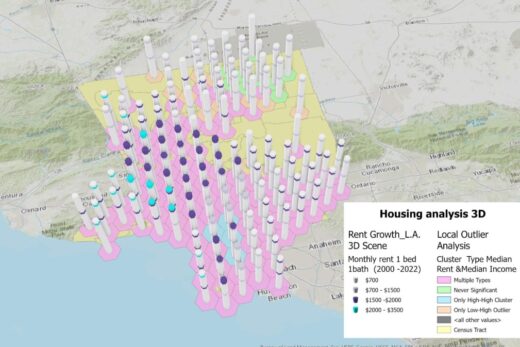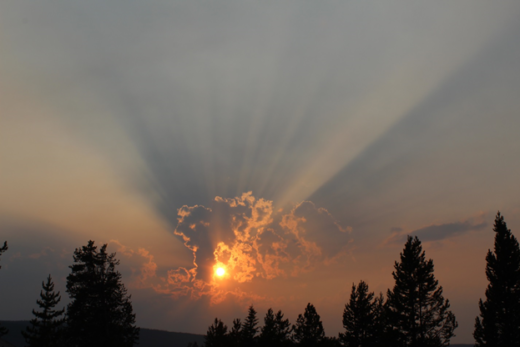According to the National Weather Service, on 08/16/2020, the weather station at Furnace Creek in Death Valley recorded a temperature of 130°F (54.4 °C). That is probably the hottest verifiable temperature ever measured on the surface of the Earth. But is it the hottest temperature to ever occur on the planet? Probably not. More on that later.

The climate of the planet has been warmer or cooler at various times in the Earth’s 4.6 billion year history. Yet we only have detailed climate records for a scattering of populated places stretching back to 1880 or so. Accurate and reliable climate data is a much more recent development – beginning generally after the end of the Second World War. Even if using 1880 as a starting point, recorded temperatures above 120°F (48.89°C) are fairly rare outside of Death Valley and a handful of other locations. And for each degree above that benchmark, Fahrenheit or Celsius, those readings get rarer still. By the time you get to the 130° mark, you’ll find less than a handful of plausible observations.
At first, one might surmise that the equatorial regions of the globe would be home to the hottest temperatures. That is where solar insolation is the highest year-round. It is certainly true that there is a surplus of heating that goes on in the tropics. However, the heat found in the low latitudes is doing more than just warming the surface. Vast quantities of water are being evaporated and lifted into the atmosphere by that energy. This liquid water must absorb tremendous amounts of energy to evaporate into water vapor and the water vapor then escapes with this stored energy that we call latent heat, leaving behind a cooler surface. This surface cooling helps prevent the humid tropical regions from experiencing temperatures much above 100°F (37.7° C).
So the contenders for the title of the “Hottest Spot on Earth” are, somewhat paradoxically, found a bit farther pole-ward. They are to be found in the belt of subtropical deserts, within a few latitudinal degrees of 30° N or S, where the air is reliably far less humid. During the summer months, dry and clear air, warming as it descends from Hadley cell circulation that began in the tropics, produces seemingly endless sunny days with some of the highest insolation values on the planet. This bakes the relatively barren surfaces which then, first through conduction and longwave radiation, and later convection, transfer that heat energy into the atmosphere. That “barrenness” is an important detail because vegetated ground does not absorb nor radiate heat as efficiently as sandy or rocky surfaces. This combination of factors means the deserts of North Africa, the Middle East, Australia and the southwestern United States, are where virtually all of the claims for the world’s highest temperature have been made.

Death Valley has all those aforementioned things going for it and an ace or two up it’s sleeve. The valley is located a couple hundred miles inland, far from maritime influences and shielded by successive mountain ranges that “wring out” almost all of the available atmospheric moisture. The biological result of this rainshadow effect means precious little can grow on the surface in Death Valley’s hyper-arid climate. Under cloudless skies, that naked surface can be heated to as much as 200°F (93.3° C). Conduction, then convection warms then lifts the dry and heated air aloft where it expands and finally cools at the dry adiabatic lapse rate. The high mountains on either side of the valley help prevent escape and mixing with other air masses. The air must descend down mountain slopes to get back down to the valley floor, forcing it to heat further by compression.

So when and where was the hottest temperature on Earth recorded?
According to the World Meteorological Organization, the current record holder for highest temperature is, not surprisingly, Death Valley. On July 10, 1913 an air temperature of 134.1 °F (56.7 °C) in the shade was recorded at Furnace Creek Ranch. Impressive as that may be, there are valid questions and plausible doubts which now surround both the environmental circumstances and the recording instrumentation on the day that reading was observed. Ironically enough, Death Valley’s claim to the top spot had been only recently re-instated in 2012. After investigation, an even higher reading of 57.8 °C (136.0 °F) on September 13, 1922 in ‘Aziziya, Libya was concluded to be in error.
In order for a recorded temperature to be accepted as a record-breaker, it must first be validated by the Climate Extremes Committee of the WMO. This body also sets certain standards for the recording of various weather events. Reliably and accurately measuring temperature is not quite like taking your child’s temperature when they are sick. These days, the familiar glass thermometer with red or silver “mercury” is rarely used by meteorologists to record the temperature. Instead, sophisticated thermistors (think: thermometer + transistor) do most of the recording.
Whether thermometer or thermistor, both need to be shielded from the sun, as direct solar insolation will give an elevated reading. This is easily relatable. Note how different the sensible temperature feels in the sun versus under an umbrella next time you are at the beach. Shielding is most often accomplished with a small, light colored box (high albedo) with small slats to allow air circulation. Instrumentation for recording temperature must also be a few feet off the ground, lest the temperature of the ground influence the reading. Ideally, the measurement should take place at least 5-6 feet above the ground and over a natural surface.

But what about the hottest temperature ever on the surface of the planet? Where and when did that occur? To answer those questions, we must look at the variables involved.
Temperature, like rainfall or elevation, represents a continuous data set. It is termed “continuous” because it has an infinite number of possible values. Such data can be thought of like a gradient of unique values spread out over a space. The values in adjacent spaces (cells in raster data) may differ by the slightest of amounts – amounts too small for our instrumentation to precisely record.
But while temperature and its values are continuous, our instrumentation for collecting such data is not. They exist as a series of fixed points. We only know the temperature at a given spot. We don’t have thermometers covering every square inch of Death Valley, nor anywhere else for that matter. It is therefore entirely possible that a few dozen feet or meters away a temperature of 131 could have been recorded on 08/16/20 if there was an instrument there to record it.
Meteorologists use tools like GIS (Geographic Information Systems) to interpolate data values from known values for places (points) where no instrumentation or values exist. Considering things like elevation, continentality, past climate data, current conditions etc., weather data can be “stretched” on to a surface of a map or graphic and covered with estimated values. You may have seen such representations on the National Weather Service website (www.nws.gov). Go ahead and try it. Click on the map and you will receive projected forecasts (including temperatures) for just about any place in the United States. Depending on where you click there might not be a weather station for miles. But you will see the distance and direction of the nearest station detailed in the “Point Forecast” at the bottom of the map thumbnail.
At times in the past, conditions have been such that even higher temperatures than have been recently measured were definitely possible. It is postulated that the early part of the Eocene Epoch (~ 54 to 48 million years ago) saw global average temperatures as much as 9 to 14°C higher than today. This incredibly warm period in Earth’s not so distant past was brought on primarily by, you guessed it, much higher levels of atmospheric greenhouse gasses. Scientists estimate that CO2 concentrations back then were in the neighborhood of 1,000 to 2,000 parts per million. As of July, 2020, the atmospheric concentration of CO2 is 414.38 ppm and rising as you read this. Among the scientific community there is little doubt that we face a warmer future and we won’t have to wait 48 million years for it to arrive.

A personal recollection.
Back in 2004 when I took the photograph above, I wanted to get a sense of what it was like to endure intense heat. So after snapping the picture in air-conditioned comfort, I rolled the windows down and let the furnace-like air rush in. The instantaneous change of 40 or more degrees in air temperature can take your breath away. It hit me like a right-cross to the jaw. No lie, heat like that is painful to breathe.
I had tried to prepare myself for this ad-hoc experiment by purchasing an ice-cold half gallon of water a little while before in Stovepipe Wells. My plan was to drive across the valley with the windows rolled down and take sips off the jug to keep hydrated as I went. I soon found out that a car window rolled down in 120+ heat offers no relief, quite the opposite is true. It feels as comfortable as you might feel if you had a bank of hair dryers set on high and aimed at your face.
The miles rolled slowly by and I sipped away at my jug. It didn’t feel like I was sweating all that much. The combination of the hot, dry air and the wind from my open windows was wicking away my perspiration nearly as fast as it beaded up on my warm skin.
After a little more than an hour I started my slow rise out of the valley near it’s south end. I took the last sips from my jug. Nature did not call. The water I poured in was leaving my body nearly as fast though my pores. I was curiously bemused by it all.
Dry heat or not, it was a very uncomfortable exercise.
References:






